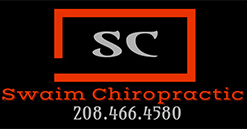
Image by eatde from Pixabay
Hello friends!
It’s Abbey, here with my last contribution to our month on strength training. A couple of weeks ago, we chatted about the Standard Process product Protefood®, something that allows us to metabolize our protein effectively. A reminder, we need quite a bit of protein, especially as we age, to keep up muscle tone and bone density. I mentioned briefly that the protein we are eating should be from high quality sources. So today, we’re going to look at what makes something a “high-quality” protein. Because what we put into our bodies to fuel it matters!
The primary definition of a high-quality protein is that the protein contains all the essential amino acids (like the Protefood does), so it can also be correctly called a “complete” protein. If you’ll recall, the essential amino acids are the ones that your body can’t make, so you need to get them in your diet, either supplementally or from food. So, what are these high-quality proteins? The most complete forms of proteins are animal sources, like lean meats, eggs, and dairy. As always, the less processed, the better. The more highly processed a product is, the less bio-available (i.e., usable) the valuable nutrients are. Of course, make sure your chicken and pork are cooked through, but it’s great if you can stand your beef or fish a little rarer than you might usually like it! This increases the bio-availability of amino acids.
I know there’s a lot of focus on plant protein sources right now, and that isn’t all bad. Plant proteins are a great supplement to a diet already fairly high in animal protein sources. On their own, however, plant proteins can’t supply the full spectrum of essential amino acids, which makes things a bit more complicated. Each plant source contains some of the essential amino acids that you need. Therefore, plant proteins, such as beans or lentils, must be combined with one another in order to get all the essential amino acids that you need. This is why plant sources can be a great ADDITION to your diet. (The exception to this rule is quinoa, which is a complete protein.) These protein sources also contain fiber and other nutrients that the body needs to keep everything in line. The last thing to keep in mind is that many plant protein products can be highly processed, which again, we are trying to avoid. If you stick to whole food sources and use them in combination to get the full complement of amino acids, you will be doing great!
If you missed out on WHY we think all of us should be eating far more protein than we do, here are some links to our last couple of blogs on that very topic: Nutrition for Strength & Dog Breath Below, I’ll link some general information on the subject as well. And as always, if you ever want to chat about any nutritional concerns, we’re happy to do so! Just call to set-up a consultation anytime!
Cheers to a stronger and healthier year! Simple changes, not easy ones!
Abbey
BS, CNC
Further reading: 10 Science-Backed Reasons to Eat More Protein
Recent Developments Concerning Protein Needs
